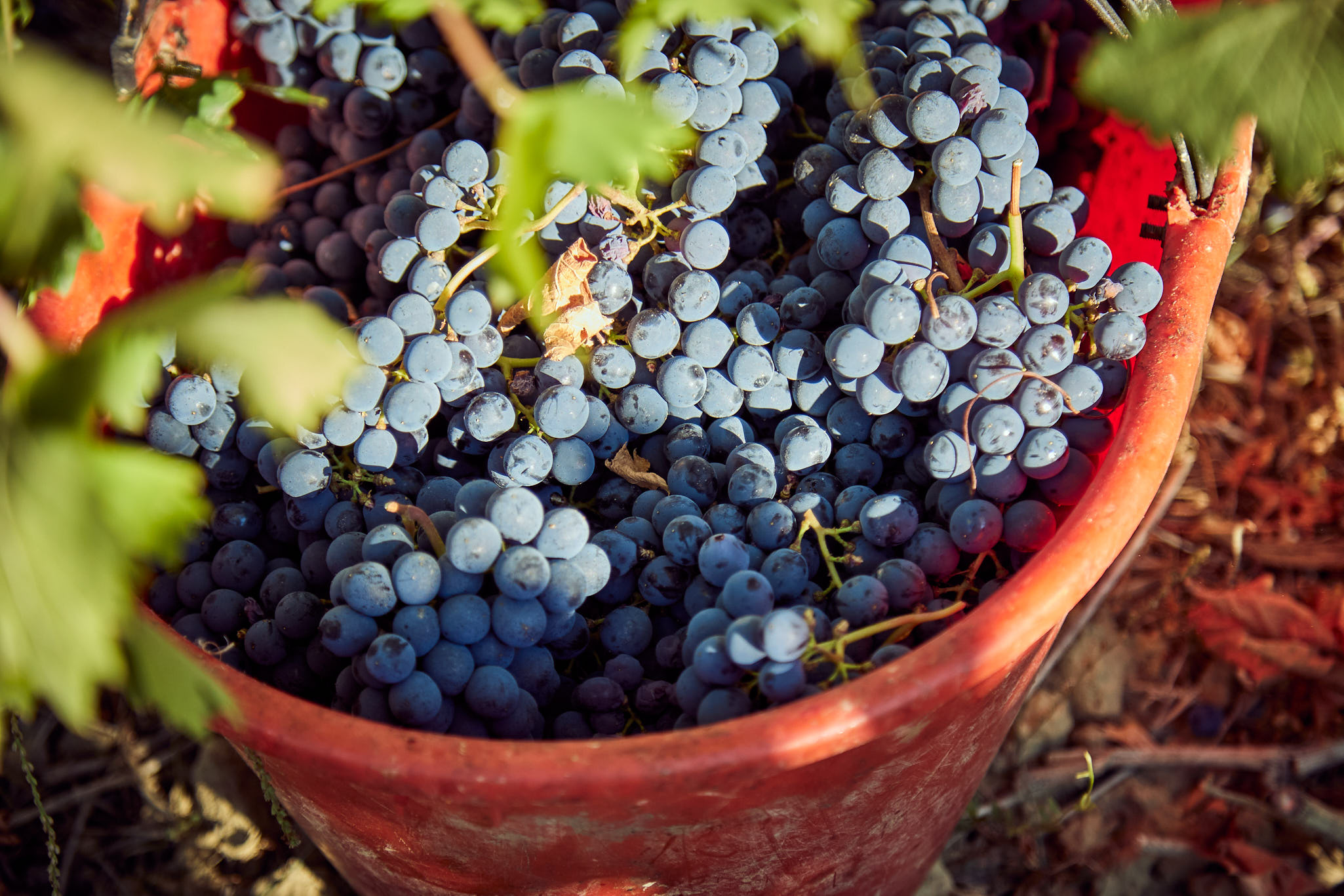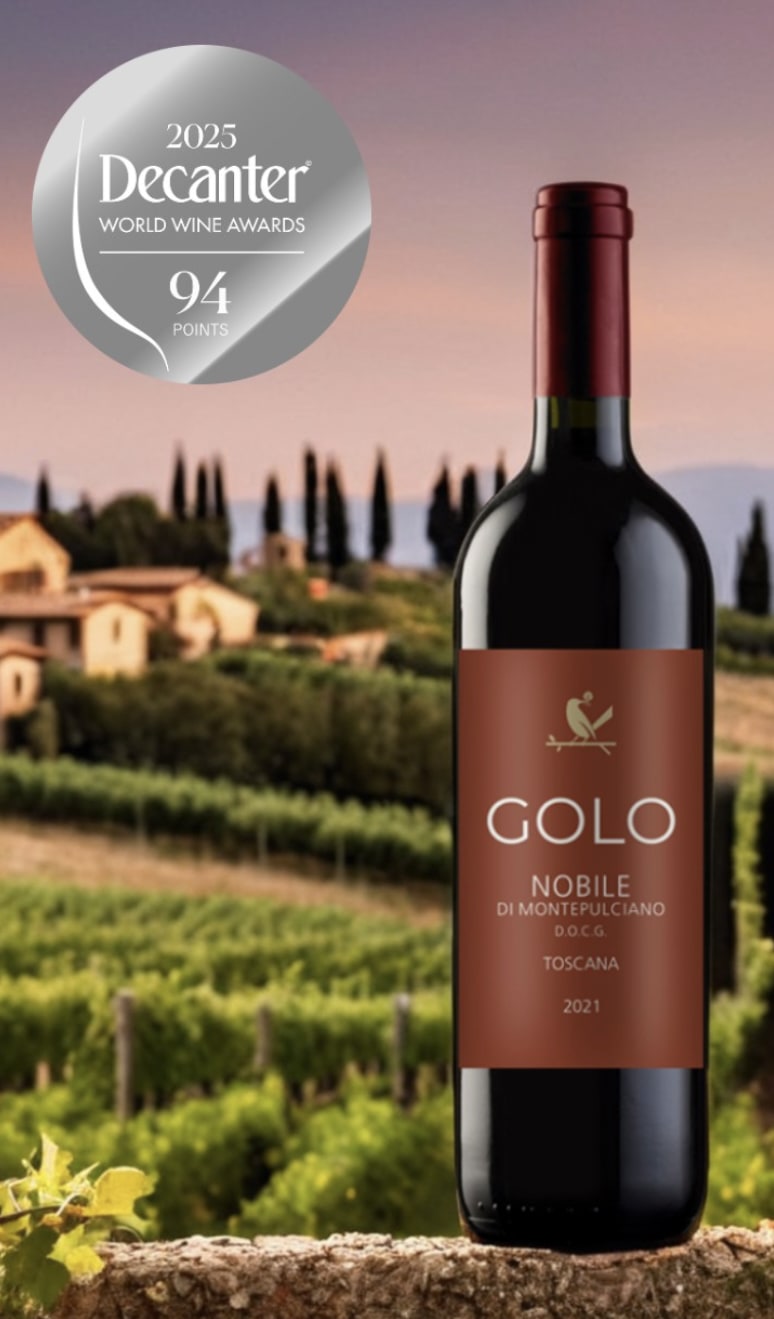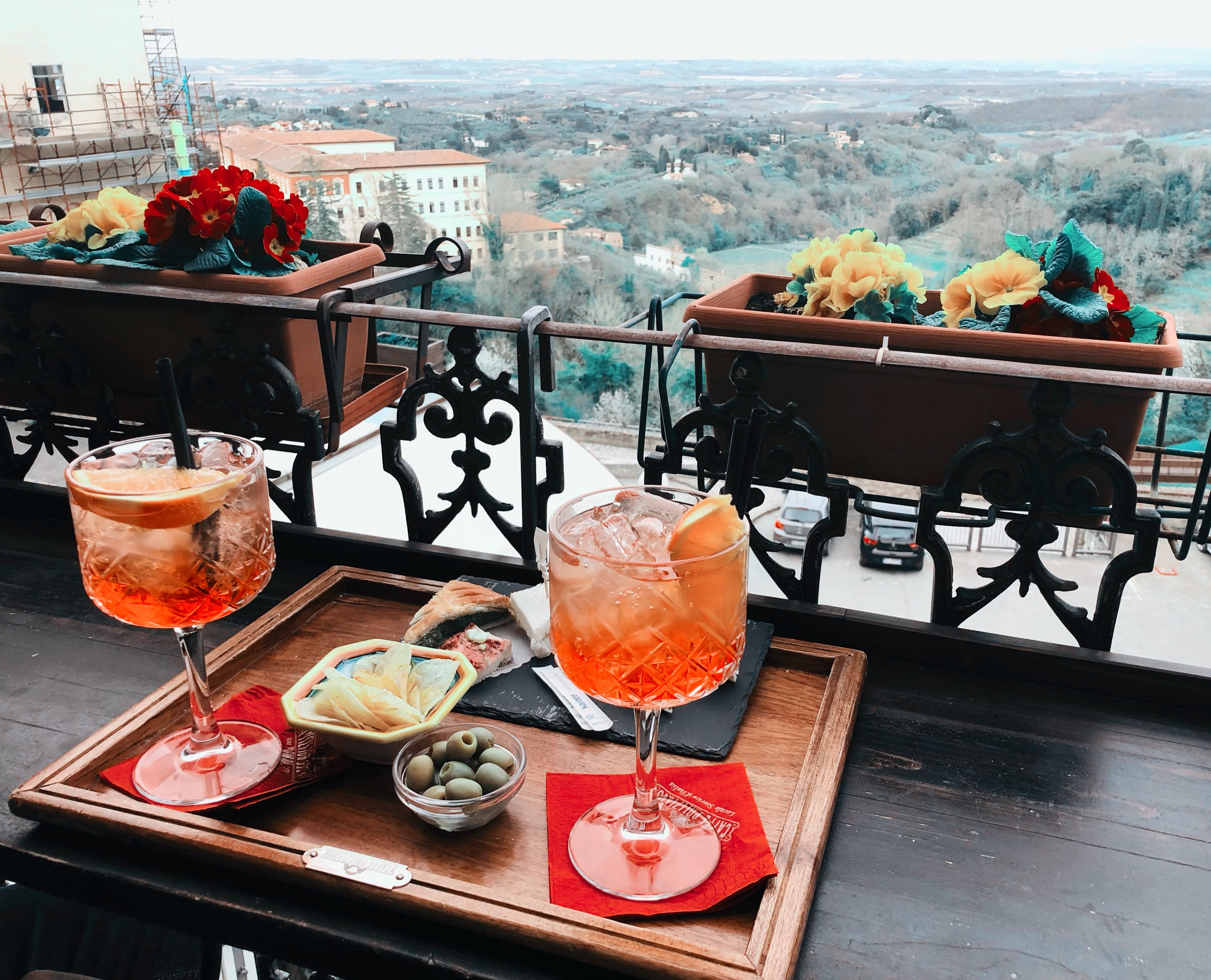Wine Course Guide for Beginners: Your 2025 Learning Path
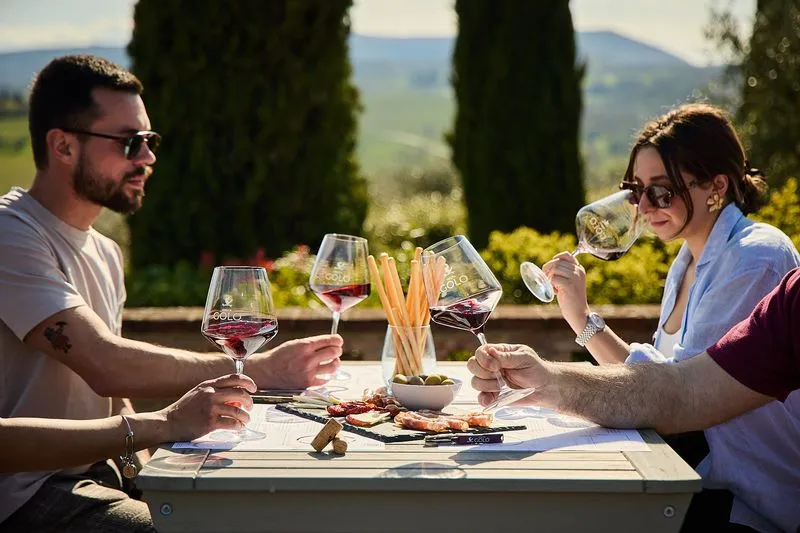
Imagine swirling a glass of wine, instantly recognizing its aromas and unlocking its unique story. You do not need to be an expert to start this journey. This wine course is designed for beginners who want to build confidence and understanding from the very first sip.
In this guide, you will find practical steps to help you choose, taste, and appreciate wine. We will explore the basics, tasting techniques, wine regions, and varieties, as well as provide resources to support your learning in 2025.
Whether you are curious about wine culture or eager to demystify the world of wine, this roadmap offers clear, achievable steps. Begin your path to wine mastery today.
Step 1: Understanding the Basics of Wine
Embarking on a wine course begins with a solid grasp of what wine truly is. Wine is an alcoholic beverage created by fermenting grape juice, where natural sugars turn into alcohol. The core components include water, alcohol, acids, tannins, and a wide range of aromatic compounds. Each wine course starts here because this foundation helps demystify the beverage, making it more approachable.
Wine has been cherished for thousands of years. Its roots trace back to ancient Mesopotamia and Egypt, weaving through Greek and Roman civilizations. Over centuries, wine’s role evolved from ritual drink to a central part of daily life and celebration. Today, wine culture is rich with tradition and meaning. To explore this fascinating journey, Discover the Wine Culture of the Territory offers deeper insights into how wine has shaped societies. Understanding this context sets the stage for any wine course, grounding your appreciation in both history and culture.
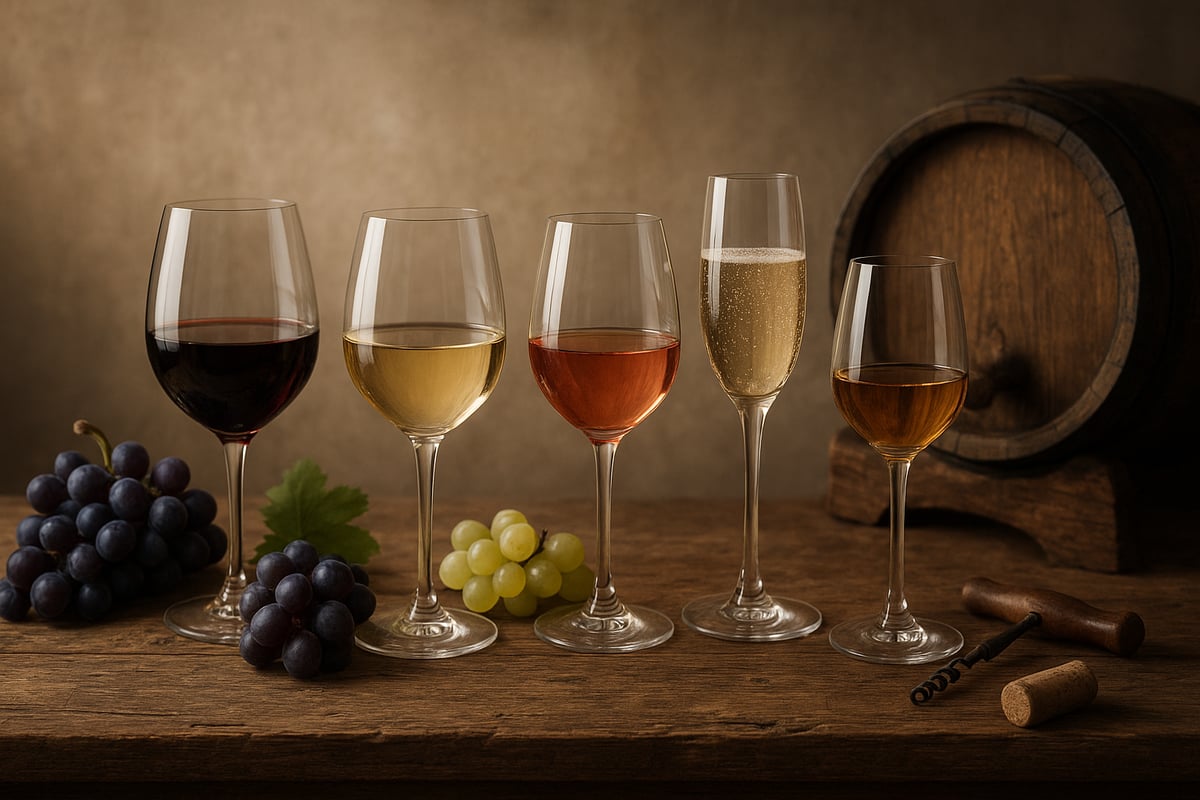
What Is Wine? Key Definitions and History
At its simplest, wine is fermented grape juice. The process involves yeast converting sugars in grapes into alcohol, resulting in a beverage that can range from light and crisp to rich and bold. A wine course often introduces terms like varietals, which refer to the type of grape used, and alcohol content, which typically ranges from 8% to 15%.
Wine’s story is woven into the fabric of civilization. Ancient Greeks drank wine at symposia, Romans spread viticulture across Europe, and monasteries in the Middle Ages preserved winemaking knowledge. In modern times, wine continues to mark milestones and bring people together. This historical perspective is a key part of any wine course, helping you appreciate how wine evolved alongside humanity.
The Five Main Types of Wine
A comprehensive wine course introduces the five main types of wine:
| Type | Example | Typical Profile |
|---|---|---|
| Red | Cabernet Sauvignon | Bold, tannic, dark fruit notes |
| White | Chardonnay | Crisp or creamy, citrus, apple |
| Rosé | Provence Rosé | Fresh, floral, red berry flavors |
| Sparkling | Prosecco | Effervescent, light, fruity |
| Dessert | Sauternes | Sweet, honeyed, rich |
Red wines are defined by their robust flavors and tannins, while white wines are usually lighter and more acidic. Rosé sits between red and white, offering a refreshing option. Sparkling wines bring bubbles and celebration, and dessert wines are sweet and luscious. In any wine course, tasting beginner-friendly wines like Pinot Grigio or Merlot helps build confidence and palate awareness.
How Wine Is Made: From Vineyard to Bottle
Understanding how wine is made is essential in a wine course. The journey begins in the vineyard, where grapes are harvested at peak ripeness. Grapes are then crushed to release juice, which is fermented with yeast. For red wines, skins stay with the juice during fermentation, adding color and tannins. White wines are usually separated from skins before fermentation, resulting in a lighter style. Rosé wines use limited skin contact for a pink hue.
After fermentation, wine may be aged in stainless steel or oak barrels, impacting flavor and texture. The final step is bottling, where wine is sealed and prepared for enjoyment. Globally, Italy, France, and Spain lead wine production, each contributing unique styles and traditions that enrich every wine course.
Essential Wine Terminology for Beginners
A wine course introduces essential vocabulary to help you describe and understand what you taste. Key terms include:
- Tannin: The dry, puckering sensation from grape skins and seeds.
- Body: The weight or fullness of the wine in your mouth.
- Acidity: The freshness or crispness that balances flavors.
- Finish: The lingering taste after swallowing.
- Terroir: The influence of soil, climate, and geography.
- Vintage: The year the grapes were harvested.
Learning these terms enhances your wine course experience, allowing you to communicate observations and preferences more clearly.
The Importance of Terroir and Grape Varieties
Terroir is a cornerstone concept in every wine course. It refers to the unique combination of climate, soil, and geography that shapes a wine’s character. For example, Sangiovese grapes grown in the rolling hills of Tuscany produce wines with vibrant acidity and earthy notes, while Merlot from Bordeaux offers plush fruit flavors.
Major grape varieties like Pinot Noir, Sauvignon Blanc, and Montepulciano each respond differently to their terroir. A real-world example is Montepulciano, where the region’s soils and microclimate create distinct, expressive wines. Exploring terroir and grape varieties in a wine course deepens your appreciation and guides your journey as a confident wine learner.
Step 2: Developing Wine Tasting Skills
Wine tasting is at the heart of every wine course. Mastering tasting skills transforms casual sipping into a journey of discovery. By learning to see, swirl, smell, sip, and savor, you unlock the stories hidden in every bottle. This step-by-step approach builds confidence, sharpens your senses, and makes each glass a learning experience.
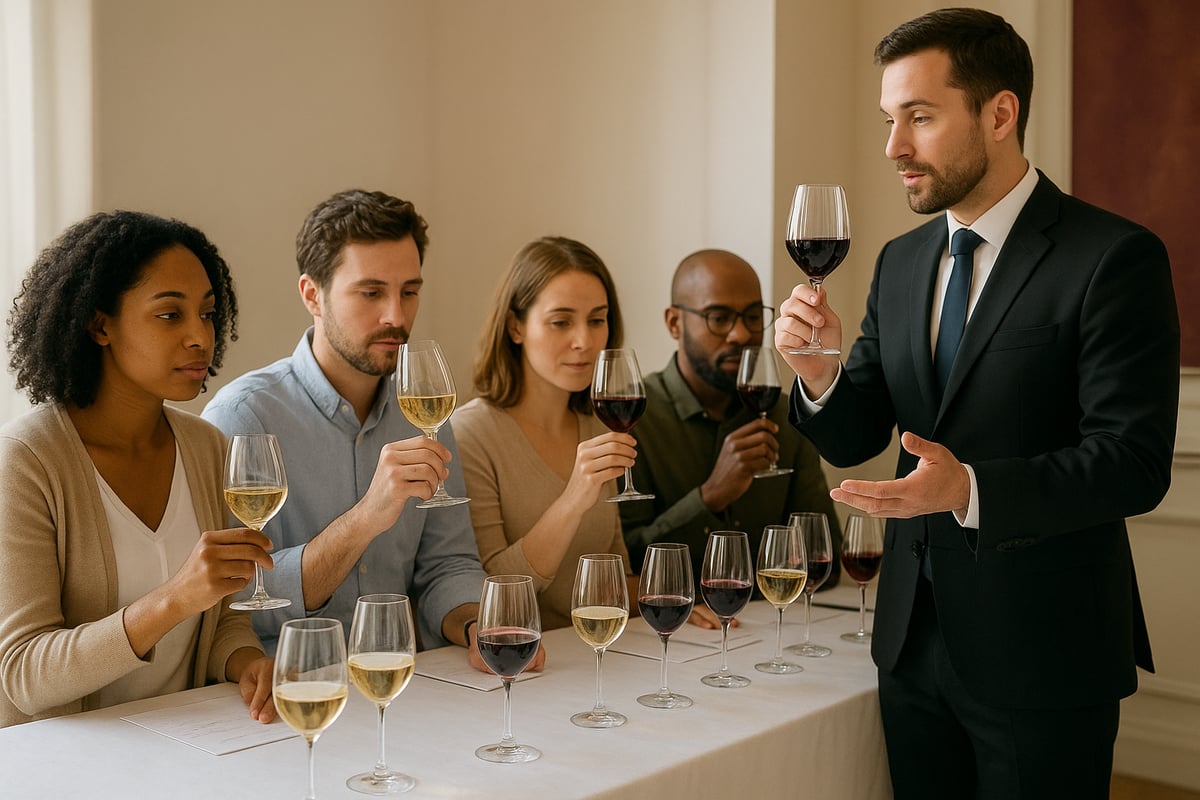
The Five Steps of Wine Tasting: Sight, Swirl, Smell, Sip, Savor
Every wine course introduces the five fundamental steps of tasting: sight, swirl, smell, sip, and savor. Begin by examining the wine’s color and clarity. Hold your glass against a white background to spot subtle differences. Next, swirl gently to release aromas and observe the 'legs' that run down the glass.
Bring the glass to your nose and inhale deeply. Identify primary (fruit, floral), secondary (spice, oak), and tertiary (earth, leather) aromas. Take a small sip, letting the wine coat your palate. Focus on the balance of acidity, sweetness, tannin, and alcohol. Finally, notice the finish—how long flavors linger after swallowing.
For a detailed, beginner-friendly guide on these steps, visit Wine Tasting for Beginners: Unlock the Secrets, which breaks down each stage and offers practical tips for your wine course journey.
Common Wine Flaws and How to Spot Them
Wine flaws can arise at any point, even in a structured wine course. The most common include cork taint (musty, wet cardboard aroma), oxidation (flat, sherry-like flavors), and Brettanomyces (barnyard, medicinal notes). Volatile acidity creates sharp, vinegar-like scents.
Spotting flaws is a valuable skill. If a wine smells off or tastes strange, trust your senses. In any wine course, instructors encourage students to compare flawed and sound wines to build confidence. Recognizing these faults helps you avoid disappointment and deepens your understanding of wine’s complexity.
Building Your Wine Vocabulary
Developing a wine vocabulary is essential in every wine course. Start by using basic descriptors: fruity, floral, earthy, oaky, spicy. As you taste more, expand your language to include terms like crisp, velvety, robust, or delicate.
Practice articulating what you experience. Compare notes with classmates or friends. Over time, you will find it easier to communicate preferences, making every wine course more rewarding. Remember, there are no wrong answers—personal impressions are part of the learning process.
Tasting at Home vs. Professional Tastings
Tasting environments vary between home and professional settings. In a wine course, tastings use standard glassware, neutral backgrounds, and controlled lighting. At home, aim to replicate these conditions for consistency.
Set up your own session with a few bottles, water, and a simple tasting sheet. Limit distractions and taste in good light. Professional tastings emphasize quiet observation, while home tastings can be more relaxed and social. Both approaches enhance your wine course experience, offering flexibility and real-world practice.
Example: Tasting Notes for Popular Wines
Understanding tasting notes is a core part of any wine course. Below is a sample table summarizing typical profiles for beginner-friendly wines:
| Wine | Aroma | Body | Finish |
|---|---|---|---|
| Chardonnay | Apple, vanilla | Medium | Smooth |
| Pinot Noir | Cherry, earth | Light | Elegant |
| Rosé | Strawberry, citrus | Light | Crisp |
Sommeliers suggest focusing on aroma, body, and finish when writing notes. As you progress through your wine course, use these templates to refine your palate and build a tasting journal. Each tasting is a chance to learn, compare, and grow as a wine enthusiast.
Step 3: Exploring Wine Regions and Styles
Embarking on your wine course journey means discovering the diverse world of wine regions and styles. Understanding where wine comes from and how its environment shapes each bottle is essential for building lasting wine confidence.
Old World vs. New World Wines
A foundational concept in any wine course is the distinction between Old World and New World wines. Old World wines hail from Europe, with deep-rooted traditions guiding every step, while New World wines come from regions like the Americas, Australia, and South Africa, where innovation often shines.
Old World wines, such as those from Bordeaux, typically emphasize terroir and subtlety. In contrast, New World wines, like Napa Valley Cabernet Sauvignon, often highlight fruit-forward flavors and boldness.
Comparing both helps beginners appreciate how climate, history, and technique influence the glass. This awareness elevates your wine course experience and deepens your appreciation of global wine diversity.
Iconic Wine Regions to Know
Exploring world-famous regions is key in your wine course. France leads with Bordeaux, Burgundy, and Champagne. Italy captivates with Tuscany, Piedmont, and Veneto, while Spain offers Rioja and Ribera del Duero. The New World features California, Australia, and Chile.
Here’s a quick table to compare:
| Country | Notable Regions | Signature Grapes |
|---|---|---|
| France | Bordeaux, Burgundy | Merlot, Pinot Noir |
| Italy | Tuscany, Veneto | Sangiovese, Prosecco |
| Spain | Rioja, Ribera del Duero | Tempranillo |
| USA | Napa, Sonoma | Cabernet Sauvignon |
| Australia | Barossa Valley | Shiraz |
These regions shape the curriculum of any thorough wine course, offering countless styles and stories to explore.
Understanding Wine Labels and Appellations
Wine labels can seem cryptic to beginners, but your wine course will demystify them. In Europe, appellations like AOC (France), DOCG (Italy), and DO (Spain) guarantee certain quality standards and origin.
Key elements to scan for on any label include:
- Vintage (year the grapes were harvested)
- Producer (the winery or estate)
- Region (where the wine was made)
- Grape variety (e.g., Chardonnay, Merlot)
Learning to decode these details empowers you to make informed choices and track your preferences throughout your wine course journey.
Wine Styles and Food Pairing Basics
A comprehensive wine course introduces you to the main wine styles: full-bodied reds, crisp whites, aromatic rosés, and sparkling wines. Each style brings unique characteristics that shine alongside specific foods.
Basic pairing principles include:
- Acidic wines with rich, fatty dishes (e.g., Sauvignon Blanc with goat cheese)
- Sweet wines with spicy cuisine (like Moscato with Thai food)
- Bold reds with hearty meats (such as Chianti with pasta)
Experimenting with pairings as part of your wine course helps you understand the synergy between wine and food, building confidence with every meal.
The Value of Immersive Wine Experiences: Visiting Wineries and Vineyards
Nothing accelerates your wine course like stepping into a vineyard. Guided tastings and tours immerse you in the heart of winemaking, where you can see, smell, and taste terroir firsthand.
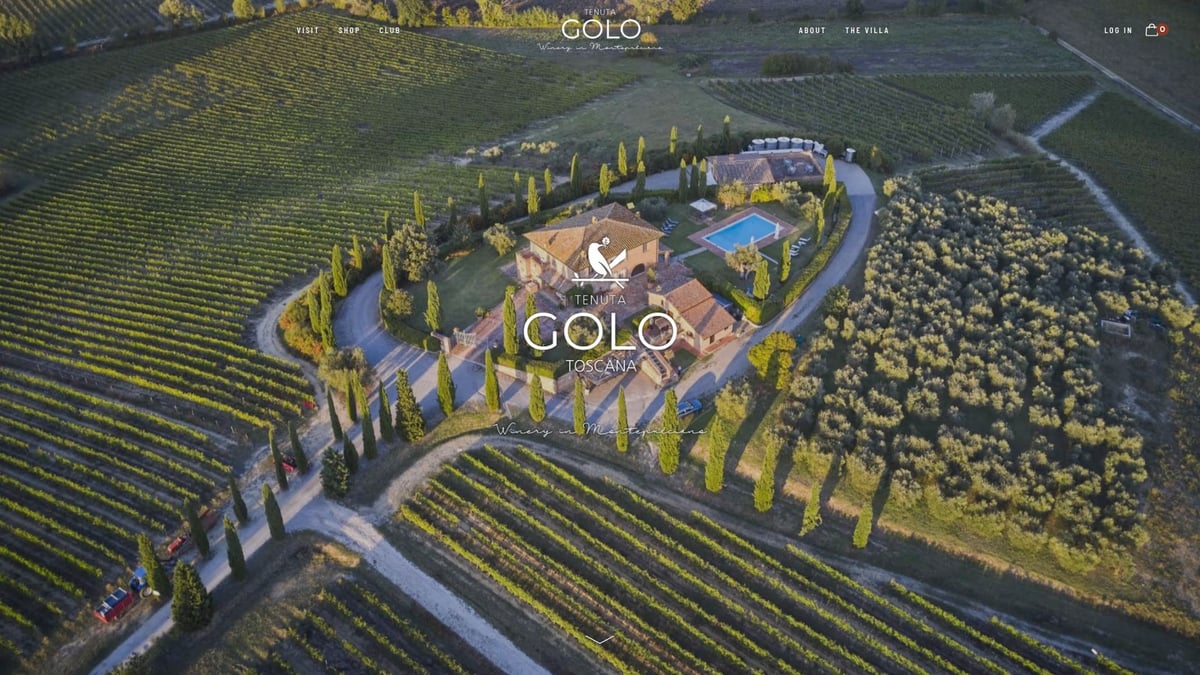
For example, at Visit Tenuta Golo: Wine Experiences, guests explore the vineyards of Montepulciano, sample Nobile di Montepulciano DOCG, and learn directly from passionate producers.
Benefits include:
- Personalized education from experts
- Sensory engagement beyond the classroom
- A deeper, lasting connection to wine culture
These experiences are invaluable for anyone committed to mastering their wine course.
Step 4: Building Your Wine Knowledge at Home
Learning about wine does not require a trip to a vineyard or a formal classroom. You can begin your wine course journey from the comfort of your own home, using simple tools, reliable resources, and interactive communities. With a structured approach, you will gain the confidence to taste, select, and appreciate wines like a pro.
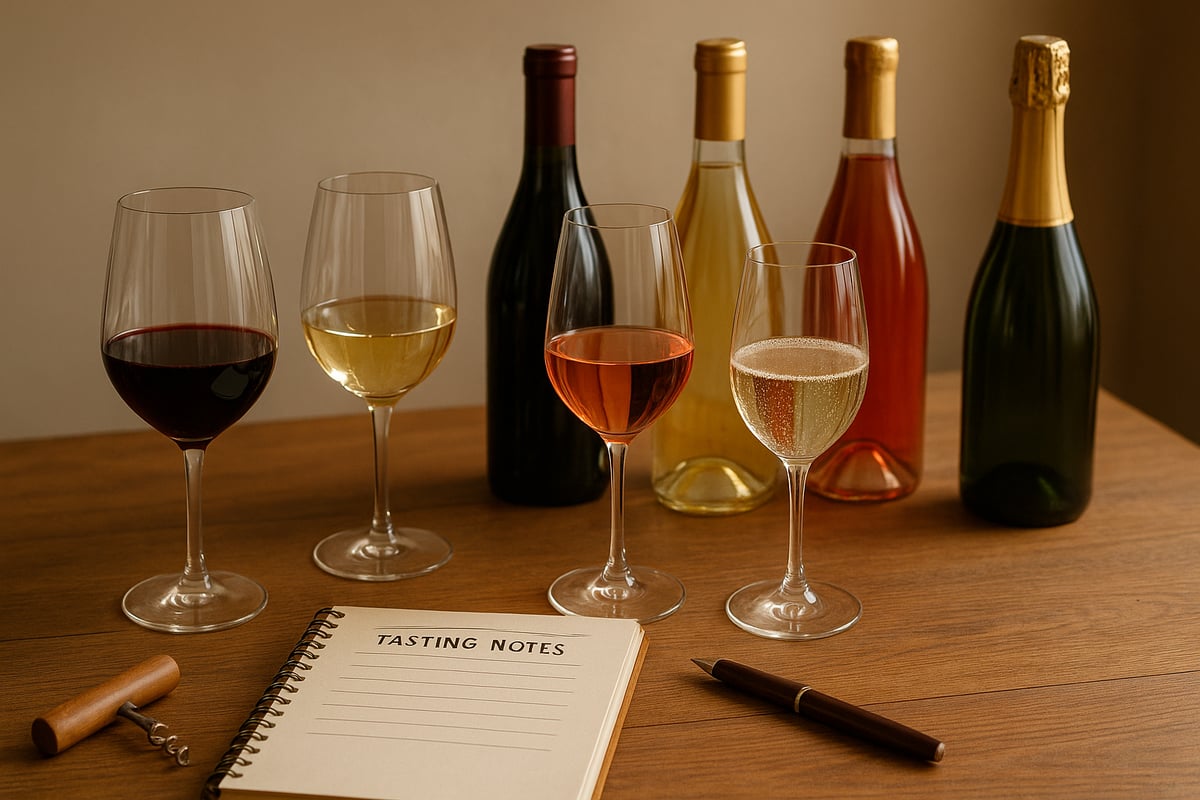
Creating a Beginner Wine Tasting Kit
Starting your wine course at home begins with assembling a basic tasting kit. The essentials are simple: a set of clear, tulip-shaped wine glasses, a reliable corkscrew, a tasting notebook, and an aroma wheel for reference. These tools help you observe, record, and understand your wine experiences.
Select a range of beginner-friendly wines, such as a Sauvignon Blanc, Pinot Noir, Rosé, and a sparkling option. This variety allows you to explore different styles and regions, making your wine course practical and engaging.
- Wine glasses (at least four)
- Corkscrew or wine opener
- Tasting notebook and pen
- Aroma wheel or chart
- 4-6 bottles across types and regions
A well-equipped kit is the foundation for structured, enjoyable learning.
How to Read and Research About Wine
The best wine course experience combines tasting with learning from trusted sources. Start with beginner-friendly books like “Wine Folly: The Essential Guide to Wine.” Explore magazines such as Wine Spectator or Decanter, which offer insights on trends, regions, and tasting tips.
YouTube channels and blogs provide visual and interactive content for different learning styles. Look for channels hosted by certified sommeliers or experienced educators. Bookmark a few reputable blogs for regular updates and inspiration as you progress in your wine course.
- Recommended book: “Wine Folly: The Essential Guide to Wine”
- Magazines: Wine Spectator, Decanter
- Blogs: Jancis Robinson, Wine Anorak
- YouTube: Wine Folly, Madeline Puckette
Research expands your palate and deepens your appreciation.
Joining Wine Communities and Clubs
Connecting with others is a valuable part of any wine course. Local wine clubs and online forums like Vivino or Reddit r/wine offer opportunities to share experiences, ask questions, and join group tastings.
Participating in a wine club accelerates your learning and helps you discover new favorites. For a more guided approach, consider joining a membership program such as the Join the Golo Wine Club, where you receive curated selections and access to exclusive events.
- Local in-person clubs and tastings
- Online forums and review platforms
- Wine club memberships for curated experiences
Community support keeps your wine course engaging and interactive.
Tracking Your Progress: Wine Journals and Apps
Documenting your journey is essential in any wine course. Use a tasting journal to record notes, preferences, and new discoveries. Many beginners find that keeping track of bottles and ratings helps refine their palate over time.
Wine apps like Vivino or Delectable allow you to log wines, rate them, and receive personalized recommendations. According to Wine Intelligence, 60% of new wine learners use apps to enhance their wine course experience.
| Tool | Purpose | Example |
|---|---|---|
| Journal | Record tasting notes | Moleskine notebook |
| App | Log wines, ratings | Vivino, Delectable |
Consistent tracking supports long-term growth and confidence.
Setting Personal Wine Learning Goals for 2025
A successful wine course is built on clear, achievable goals. Structure your learning by setting monthly themes, such as focusing on a specific region or grape variety each month. Create tasting challenges, like comparing Old World and New World styles or pairing wines with different foods.
Sample 12-month plan:
- January: Introduction to wine types
- February: Exploring French wines
- March: Food pairing basics
- April: Italian varietals
- May: Sparkling wines
- And so on
By following a plan, you will steadily expand your knowledge and make your wine course both rewarding and fun.
Step 5: Advancing Your Wine Education
Taking your wine course experience beyond the basics opens up a world of knowledge, flavor, and personal growth. As you deepen your understanding, structured learning and real-world exploration go hand in hand. This step guides you through the most effective ways to expand your wine expertise in 2025.
Taking Online and In-Person Wine Courses
The most direct route to advancing your knowledge is enrolling in a structured wine course. Options range from globally recognized certifications like WSET Level 1 to flexible online platforms such as Coursera and MasterClass. These courses teach you about grape varieties, regions, tasting techniques, and food pairing.
In-person wine course sessions often provide hands-on tasting and interactive discussions. Online formats offer convenience and self-paced study, perfect for busy schedules. Compare the curriculum, teaching style, and cost before enrolling. A wine course builds foundational skills and gives you the confidence to explore new bottles and styles.
Attending Wine Events and Festivals
Beyond the classroom, real-life experiences are invaluable for any wine course learner. Wine events, tastings, and festivals introduce you to producers, sommeliers, and fellow enthusiasts. Local wine fairs and international festivals offer guided tastings, masterclasses, and networking opportunities.
Attending these events accelerates your learning by exposing you to a diverse range of wines and expert opinions. According to the Wine Market Council, 80% of wine course students progress faster through active participation. Make it a goal to attend at least one event each season to expand your palate and connect with the wine community.
Exploring Advanced Topics: Cellaring, Serving, and Collecting
As you progress in your wine course journey, delve into specialized areas like cellaring, serving, and collecting. Learning proper storage conditions, such as temperature and humidity, helps preserve wine quality. Understanding serving temperatures and glassware enhances tasting experiences.
Building a small wine collection is an exciting step for many wine course graduates. Start by selecting bottles from different regions and vintages. Research aging potential and record your tasting notes. These advanced topics deepen your appreciation and broaden your expertise.
Becoming a Confident Wine Buyer
A key outcome of any wine course is becoming a savvy buyer. Learn to interpret shelf talkers, read wine labels, and ask informed questions at shops or restaurants. Explore both physical stores and reputable online retailers to discover new favorites.
Practice makes perfect. Use your wine course knowledge to identify value bottles and experiment with different regions and varieties. Over time, you will develop intuition and confidence when selecting wines for any occasion.
Setting Your Next Learning Milestones
Continuous improvement is the hallmark of a successful wine course participant. Set specific goals, such as mastering a new region each month or completing an intermediate course. Track your progress using tasting journals or wine apps.
Seek out additional resources—books, podcasts, and advanced classes—to keep your learning journey dynamic. Assess your skills regularly and celebrate milestones. With each step, your wine course experience becomes more enriching and enjoyable.
Step 6: Overcoming Common Beginner Challenges
Embarking on a wine course as a beginner can feel intimidating, but the right strategies will help you overcome common obstacles. This section addresses the myths, budget concerns, restaurant anxieties, and confidence issues many face when starting their wine course journey.
Demystifying Wine Snobbery and Myths
Many new wine course students worry about encountering wine snobbery or feeling out of place. Remember, wine appreciation is about personal taste, not impressing others. Myths like "only expensive wines are good" or "there is a right way to enjoy wine" can hold you back. Stay open to new experiences and focus on exploring what you genuinely enjoy during your wine course.
Budget-Friendly Wine Learning
You do not need a large budget to succeed in a wine course. Affordable wine flights, sharing bottles with friends, and attending free tastings at local shops are practical ways to learn. Supermarket wines can offer surprising quality and variety. By focusing on value, you can explore a wide range of wines and build your confidence in your wine course without overspending.
Navigating Restaurants and Wine Lists
Ordering wine at a restaurant can feel overwhelming, especially for wine course beginners. Do not hesitate to ask the server or sommelier for recommendations. Share your preferences, such as "I prefer light, fruity reds" or "I like crisp whites." Most professionals are eager to help you find a wine that matches your taste and your meal. Practice makes perfect in these settings.
Handling Mistakes and Building Confidence
Mistakes are part of every wine course journey. You might mispronounce a grape variety or pick a wine you do not enjoy. Embrace these experiences as valuable lessons. Every expert was once a beginner. For practical tips on building tasting skills and moving past early missteps, visit Wine Tasting 101: Tips for Beginners. Remember, confidence grows with each tasting and new discovery.
Resources for Ongoing Support
Support is essential as you progress in your wine course. Local wine shops, online forums, and educational websites offer advice and community. Consider joining a wine club or engaging with groups on platforms like Reddit or Vivino. These resources provide encouragement, answer questions, and keep your wine journey enjoyable and collaborative.
Now that you have a solid foundation in wine basics and tasting skills, imagine taking your learning even further by experiencing wine where it’s made. Visiting a boutique estate like Tenuta Golo in Montepulciano lets you connect with passionate winemakers, explore the unique terroir, and enjoy memorable tastings in a beautiful 17th-century setting. There’s no better way to deepen your appreciation and bring everything you’ve learned to life. If you’re ready to turn your wine journey into a true experience, I invite you to Book Your Wine Tasting Now.


